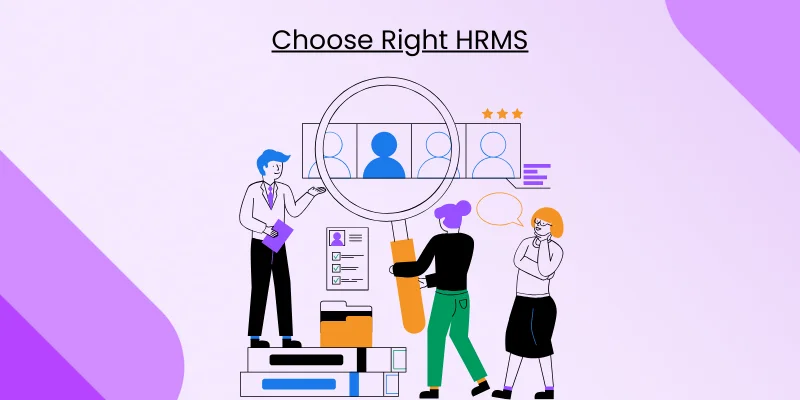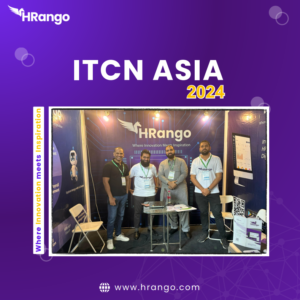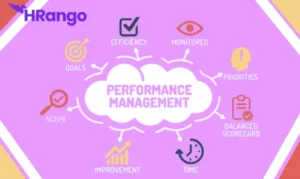Selecting the right Human Resource Management System (HRMS) is a critical decision. We will explain how to choose the right HRMS because it is a decision that can significantly impact your organization’s efficiency and employee satisfaction, and platforms like hRango are designed to meet these exact needs. Here are key factors to consider when choosing an HRMS:
1. Identify Your HR Needs
Evaluate current HR processes:
- Assess the strengths and weaknesses of your existing HR processes.
- Identify areas where automation and improvement are needed.
Define Your Goals:
- Determine what you aim to achieve with an HRMS (e.g., improve payroll accuracy, streamline recruitment, enhance employee engagement).
2. Features and Functionality of the right HRMS
Core HR Functions:
- Ensure the right HRMS includes essential features like employee information management, payroll, attendance, and performance management, which hRango excels at providing.
Advanced Features:
- Look for additional functionalities such as recruitment and onboarding, talent management, employee self-service, and compliance management.
Customization:
- Check if the right HRMS can be tailored to meet your organization’s specific needs and workflows.
3. Integration Capabilities of the right HRMS
Existing Systems:
- Ensure the right HRMS can integrate seamlessly with your existing software, such as ERP, CRM, and payroll systems, similar to how hRango offers seamless integration capabilities.
APIs and Third-Party Integrations:
- Look for systems that offer robust API capabilities and integration with popular third-party applications.
4. User Experience
Ease of Use:
- Choose the right HRMS with an intuitive interface that is easy for HR staff and employees to navigate.
Mobile Access:
- Ensure the HRMS provides mobile access so that employees can manage their information and requests on the go.
Employee Self-Service:
- Look for self-service portals that empower employees to manage their profiles, request leaves, and access other HR-related information.
5. Scalability and Flexibility
Growth Potential:
- Select a system that can scale with your organization as it grows.
Flexibility:
- Ensure the HRMS can adapt to changing HR policies and procedures.
6. Data Security and Compliance
Security Measures:
- Evaluate the security protocols of the HRMS to protect sensitive employee data.
Compliance:
- Ensure the system complies with relevant labor laws and data protection regulations.
7. Vendor Support and Reputation
Customer Support:
- Check the level of support provided by the vendor, including availability of help desk, chat support, and training.
Vendor Reputation:
- Research the vendor’s reputation through customer reviews and ratings on platforms like hRango.
8. Cost and ROI
Pricing Model:
- Understand the pricing structure, including any hidden costs for implementation, training, or additional features.
Return on Investment:
- Calculate the potential ROI by assessing how the HRMS can save time, reduce errors, and improve overall HR efficiency.
9. Trials and Demos
Free Trials:
- Take advantage of free trials to evaluate the HRMS in your work environment.
Demos:
- Request product demos to see the system in action and ask specific questions related to your needs.
Conclusion
Choosing the right HRMS involves careful consideration of your organization’s unique needs, the system’s features, integration capabilities, user experience, scalability, data security, vendor support, and cost. By thoroughly evaluating these factors, you can select an HRMS like hRango that enhances your HR processes and supports your organizational goals.
FAQs
What are the most important features to look for in an HRMS?
Key features include payroll and attendance management, employee self-service portals, compliance tools, analytics and reporting capabilities, and integration with other business systems.
How do I determine the right HRMS for my business size?
Small businesses should focus on cost-effective, scalable solutions, while medium and large enterprises may need more advanced features and integration capabilities.
What should I consider when evaluating HRMS vendors?
Consider the vendor’s reputation, customer support, experience in the HR technology space, and the availability of training and resources.
How can I ensure the HRMS will grow with my company?
Choose an HRMS that offers scalability and flexibility, with options for customization and the ability to adapt to future workforce trends.
What are the common challenges in implementing an HRMS?
Challenges include data migration, integration with existing systems, ensuring user adoption, and managing the cost and complexity of implementation.







